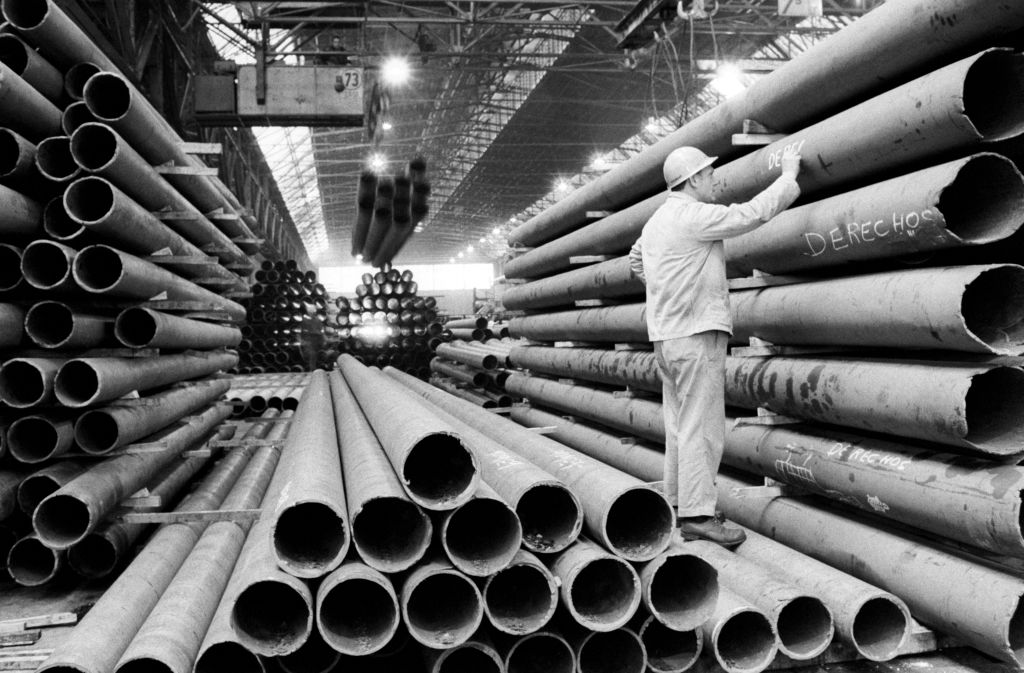Latin America's Competitive Challenge
Latin America's Competitive Challenge
The hemisphere-wide commodity-led boom is unlikely to improve competitiveness without sweeping reforms in the areas of infrastructure, institutions, and human capital, according to Jerry Haar of Florida International University. His new book, Can Latin America Compete? Confronting the Challenges of Globalization, will be launched at AS/COA.
These are good economic times for Latin America. From 2003 to 2005, the region’s economies, when measured in dollars, expanded by an astonishing 53 percent. A sixth straight year of economic growth is now expected, propelled by record high commodity prices.
Yet, the commodity-led boom in Latin America has reignited a debate regarding the region’s place in the world economy and its ability to compete. Soybeans and copper may be soaring but total factor productivity over the last three years grew by less than 4 percent. The economies of Asia, Africa, and Central Europe expanded at much faster rates over the last half decade, along with their ability to attract foreign direct investment.
The positive external shock to the region, due to the growth in demand and prices of commodities, is just that—an external shot in the arm providing temporary relief to Latin American consumers and domestic businesses. It is not an inoculation against the cyclical and long-term impacts of economic volatility. Sustainable wealth creation in Latin America will be a reality only once the region improves its global competitiveness by enacting the painful and long-term reforms that it has so far avoided.
Often overlooked is the fact that the global commodity boom has not benefited all sectors within commodity-oriented economies. The non-commodity exporters in South America’s resource rich countries were the first group in this economic boom-cycle to cry foul on the issue of competitiveness. As sky-rocketing mineral prices have boosted Brazilian, Chilean, and Peruvian currencies, for example, less competitive export sectors such as textiles in Peru, wineries in Chile, or auto parts in Brazil have all lost ground in international markets. The immediate reaction of these beleaguered sectors is to lobby governments to weaken currencies or throw up protective barriers.
However, when one considers the success of textiles in Italy, wineries in Australia, and auto parts in Canada, all rich nations, the question arises: why can’t Latin America compete while sustaining strong currencies? When currencies in the region tumbled in 2001 and 2002, global competitiveness standings rose, albeit slightly. Sure enough, since 2003, as commodity prices have risen, currencies have fallen again. In 2005, Chile’s coveted position as the 19th most competitive country dropped five positions from its 2004 standing to 24th.
Thanks to its enviable supplier position in many commodity markets, Latin America will benefit over the short to medium term. But the favorable outlook for commodity prices bears other likely outcomes. Most analysts do not expect an improvement in Latin America’s global competitiveness ranking and its relative position vis-à-vis emerging competitors in Asia and Eastern Europe is expected to drop.
The region’s ability to compete will remain hampered until it takes on the politically sensitive battles of reforming labor, taxation, pension, customs, legal and judicial policies and codes. But economic boom times in any society rarely lead to tough political decision making and our hemisphere is no exception. Venezuela is a prime example. In the last three and a half decades, no government took action to lessen petroleum dependence as a percentage of exports (always above 80 percent) and export earnings. (In 1970, the price was $1.80 per barrel.)
Latin America’s political leadership faces historic decisions in the next few years that will dictate whether the region remains trapped in its commodity price driven boom-bust cycle or whether it can reform itself to improve long-term competitiveness and economic wealth. The choice can be crudely simplified as one between creating an Argentina versus an Australia. Both countries are endowed with abundant natural resources and have historically attracted capital and immigrants—key ingredients to capitalist success. Yet their performance could not be more dissimilar. In 2005, Australia ranked 10th in the World Economic Forum’s competitiveness index and enjoyed a per capita income of over $32,000 while Argentina ranked 72nd (out of 117) and its average citizen earned $13,000 per annum.
If Latin America is to truly compete in the twenty-first century—and it has no choice but to do so—it needs to undertake sweeping, deep, and unrelenting reforms in the areas of infrastructure, institutions, and human capital.
Looking at infrastructure, the situation could clearly improve. During the last two and a half decades, the region's investment in roads, electricity, water, and telecommunications ($50 billion) has declined dramatically. A meager 2 percent of GDP, infrastructure investment is now one-third that of Asia and Eastern Europe. Energy rates are expensive (Mexico's is three times that of China), and logistics costs are among the world's highest, especially for intraregional trade (e.g., Central America).
As for institutions, Latin America's are inefficient, ineffective, and inadequate for competing in the global economy. While progress has been made in lending to working-class consumers and small business (Mexico’s Banco Azteca stands out), 70 percent of Latin Americans remain unbanked. Courts are backlogged and often corrupt, and property rights are not enforced. Tax burdens are higher than in Asia, Brazil being the worst culprit. Mexico, on the other hand, does not collect enough revenue—less than 11 percent of GDP. However, business regulation is the biggest obstacle to competitiveness. The World Bank's Doing Business 2008 report documents the Kafkaesque web of regulations that choke businesses and stifle small entrepreneurs. This includes the 152 steps and five months it takes to set up a business in Brazil versus less than a month in Russia.
Finally, in human capital, Latin America has made great strides in primary education and university expansion. However, in secondary education, technology and innovation, the region fails miserably. Whereas research-and-development expenditures account for 2.5 percent of GDP in South Korea, Latin America's outlays—almost all public--are less than 0.5 percent. At a time when the region requires more engineers and scientists to compete globally, Latin America's universities overwhelmingly graduate lawyers and psychologists. In the workplace, rigid and costly labor rules undermine firm productivity.
Booms eventually come to an end. Latin America’s commodities could well become the region’s version of mortgage-backed securities. With the fundamentals working to the region’s advantage—macroeconomic stability, low inflation, privatization, and trade liberalization—Latin America should seize the moment to implement sweeping reforms in infrastructure, institutions, and human capital. This is necessary to compete in the twenty-first century and improve the quality of life for people across our hemisphere.
Jerry Haar is an associate dean and professor in the College of Business Administration at Florida International University and Research Fellow of the Columbia Program on International Investment. He is co-author with John Price of Can Latin America Compete? Confronting the Challenges of Globalization.








